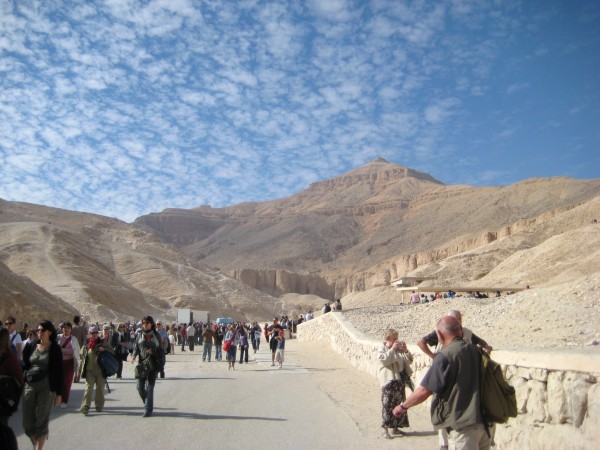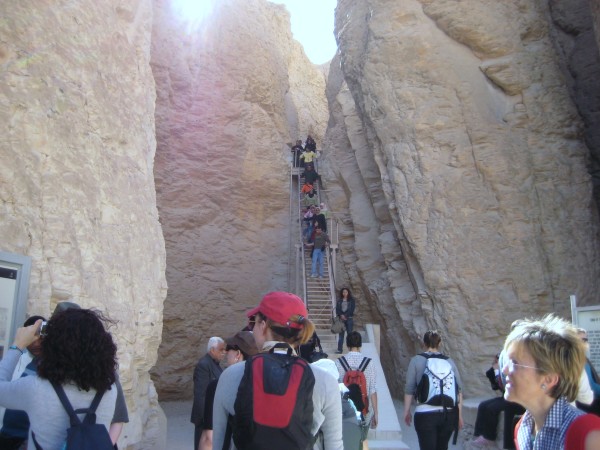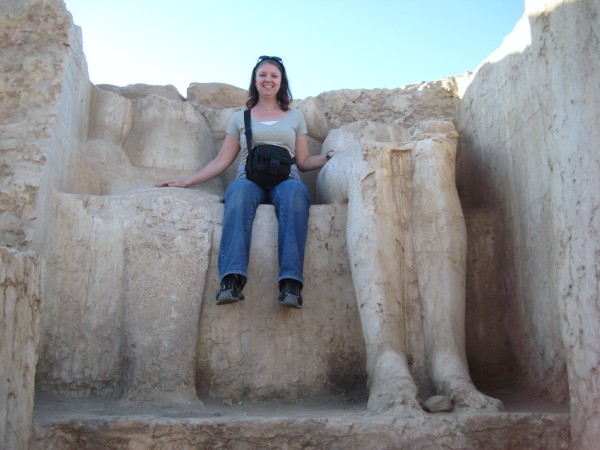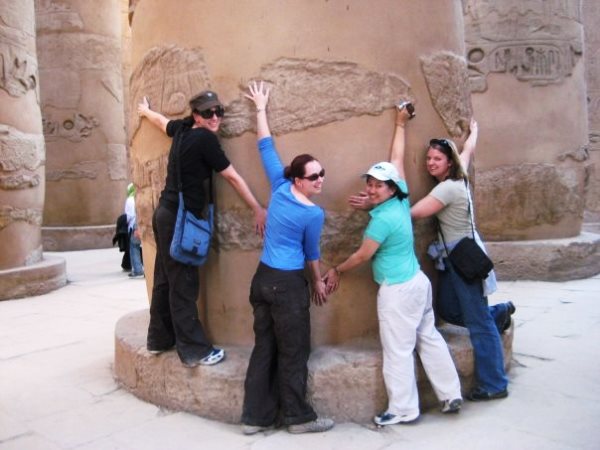
Once upon a time, someone in Luxor, Egypt decided it would be a brilliant idea to get tourists to ride donkeys into the Valley of the Kings – the large valley on the West Bank of the Nile where the Egyptians buried their kings. I may have survived camel riding without a hitch, but riding donkeys was a whole other story. I was paranoid from the beginning because Shady warned us about falling off and told us that an average of two people in each group fall off their donkeys. And it certainly didn’t help that there isn’t a saddle on the donkey – you just sit on top of a thick blanket on top of the donkey’s back with very little to hold on to. I was nervous and tense throughout the ride (even though the fall would not be that far because the donkeys are not tall animals!). Luckily, despite a couple close calls (including one when my donkey decided to take off running straight towards a wall), I emerged unscathed.

As soon as we arrived at the Valley of the Kings, I was immediately impressed. My ticket only allowed me to visit three tombs, but I am sure if there was a way to gain access to more, you could spend the entire day checking out all of the tombs in the Valley. A guide accompanied us and the first tomb she took us to was one of the Ramses kings. I got distracted from really experiencing it, though, because we had an incident when Sophie took out her phone to send a text message. No cameras are allowed inside the tombs and the guard allegedly thought Sophie’s phone was a camera. After a lot of pleading and 50 Egyptian pounds later, she got it back.

Shady warned us ahead of time that our guide would just pick the three tombs closest to the entrance and said that one of us should ask him if we could see the Tomb of Tuthmosis III, which was further out. I got nominated to do that, so after we visited the first tomb (of one of the Ramses kings), I spoke up and asked if we could see any others besides the ones he mentioned. It was no problem, so we all took off to see Tuthmosis III. It wasn’t that far away but the entrance was up a steep set of stairs and then pretty far down again. The guide tried to discourage us from going there, telling us we’d have to climb up a “20-30 meter metal ladder” several times. The “metal ladder” ended up being just some stairs and it wasn’t so bad. The tomb itself was interesting because it wasn’t finished – Tuthmosis III died before they could complete it. So a lot of the drawings are rougher, like stick figures, and there’s not as much color.

Our last tomb was Ramses I and there was another long line to get in. Megan and I decided to try to bypass a large group of Italian tourists in front of us who were proceeding excruciatingly slowly but they cut us off and scolded us for “not respecting the line.” We were momentarily annoyed, but eventually got the last laugh when the guard scolded them for moving through the tomb too slowly.
After the Valley of the Kings, we continued on to the other major attraction in Luxor: Karnak Temple. No donkeys for this journey; instead, we traveled by horse and carriage. Karnak Temple was amazing and enormous beyond words. While we were all itching to just wander around and explore, we felt obligated to listen to what our guide had to say about the temple first. Of course, that also meant listening to the legend that every guide in Egypt seemed to repeat: the one about the gods Osiris and Isis and Osiris’ brother trying to kill him by drowning him in a sarcophagus and then by cutting his body into pieces. Slightly more interesting, the guide also pointed out a statue of a scarab that apparently you are supposed to walk around 3 times to get engaged, 7 times to get married and 10 times to get pregnant. I took three spins around, so we’ll see how that turns out!



I think of Karnak Temple as a giant playground of ancient ruins. We all had a blast just playing around and posing for different pictures all around the complex, including standing up on blocks doing a standard “pharoah” pose -left legs in front symbolizing life and then arms out in front as if holding a staff. And of course we did some typical hugging the giant columns poses and some “mummy” poses. We repeated some of these when we visited Luxor Temple later that night. As great as it all was, though, I was close to hitting my limit of temple visits. I was ready to return to Cairo.
Note: I visited Egypt in January 2008, prior to the revolution. This post was originally published in 2010.
